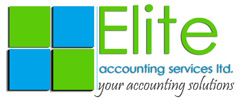Bank customers paid Shs. 84.1 billion in fees, commissions and service charges in the first half of this year through June even as the lenders devised new channels of boosting their revenue to compensate for the lower interest charged on loans. The half year banking sector data analysis shows that 39 out of 40 Kenyan banks non-interest income increased by Shs. 12 billion during this period helping them recover from slimmer interest margins. This non-funded income realized the fastest growing revenue stream driving their after-tax profit growth by 14.2% to Shs. 67.12 billion in the said duration.
The banks’ core revenue stream, customer loans interest went up by only 1.3% in the period to stand at Shs. 145 billion while on the other hand, government securities interest income rose by 9% to stand at Shs. 66.6 billion. This is after the country’s commercial banks have been forced to become more creative in their income generation methods due to the interest rate cap imposed by the government in late 2016. Their refuge in government securities also tightened due to the falling yields on Treasury bonds and bills even as government tries to reduce its borrowing appetite.
Digital platforms uptake increase in disbursement and handling of loan transactions have opened new sources of fees and commissions to banks thus helping them navigate the interest rate cap. The lenders have also increased the amount of fees and service charges on loans in compensation of the loss of margin and inability to price customers’ loan default risk. Top digital lending platforms operated by top banks in the country include Commercial Bank of Africa‘s (CBA) M-Shwari, Kenya Commercial Bank’s (KCB M-Pesa), Equity Bank’s Equitel and EazyApp among others.
These digital platforms have gained millions of users within a short period of time, attracted mainly due to the ease of accessing loans and the convenience of mobile banking without necessarily visiting a branch. Since the fees charged on loans are not counted as part of interest charges, banks can actually load these fees above the capped rate at 13%. Banking data analysis shows that the large lenders, who control more than 80% of the market have taken the lion’s share of non-funded income.
Fees and commissions from forex trading and handling of the growing remittances from abroad have also helped the banks grow their non-interest earnings. The potential review of the rate cap, which the National Treasury is trying to have repealed in parliament could see them falling back to individual customers. Find out more information by reading our earlier articles on digital mobile loans and government securities.
